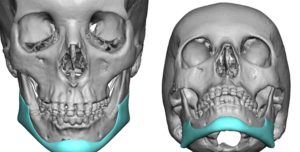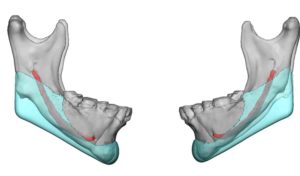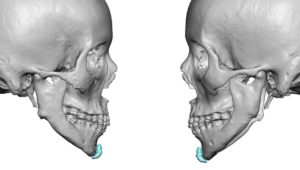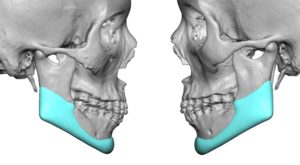Background: One of the most popular jawline surgeries around the world, particularly in Asian people, is jaw reduction. Know more commonly as V-Line jaw reduction surgery, it involves removal of wide or flared jaw angle (amputation) and chin reshaping. (narrow and shortening through am intraoral T-shaped ostectomy) For those patients that have a wide jaw and and a lower facial prominence as a result, it can be an effective lower facial reshaping procedure. It is easy to see why this would be of aesthetic predominantly in Asian patients given their natural facial bone shape.
Because the procedure is performed exclusively through an intraoral approach, it can be very difficult to have even and symmetric bone cut lines. There is also the issue of how the bone heals and the smoothness that may or may not result. For this reason, it is really the norm to expect some bone asymmetries between the two sides of the jaw and even at the chin. Fortunately the overlying soft tissues are thick and can help mask such bony asymmetries/irregularities should they result from the procedure.
But like reduction surgery anywhere on the face and body, losing bone support can also cause adverse soft tissue issues. This is an issue primarily in the jaw angle areas in V-line jaw reduction surgery. It is not rare that I hear from a patient who has had jawline reduction surgery that they do not like the subsequent flattening/weakness of the back of their jaw and that they feel the soft tissues now sag along the jawline.



Highlights:
1) Unfavorable aesthetic results can occur from jawline reduction (V-line jaw surgery) with loss of jawline definition and tissue support.
2) ‘Reconstruction’ of lost jaw angle and chin from V-line surgery requires a vertical lengthening of the shortened jaw angles and widening of the chin.
3) A custom jawline implant is the best approach to V-line jaw surgery reversal.
Dr. Barry Eppley
Indianapolis, Indiana




